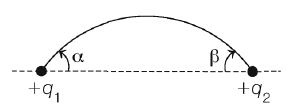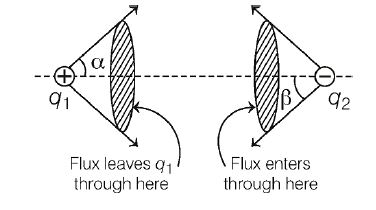Q.
An electrostatic field line leaves at an angle $\alpha$ from point charge $q_{1}$ and connects with point charge $- q_{2}$ a tan angle $\beta$($q_{1}$ and $q_{2}$ are positive) see figure below. If $q_{2}=\frac{3}{2}q_{1}$ and $\alpha=30^{\circ},$ then

KVPYKVPY 2018Electrostatic Potential and Capacitance
Solution:



